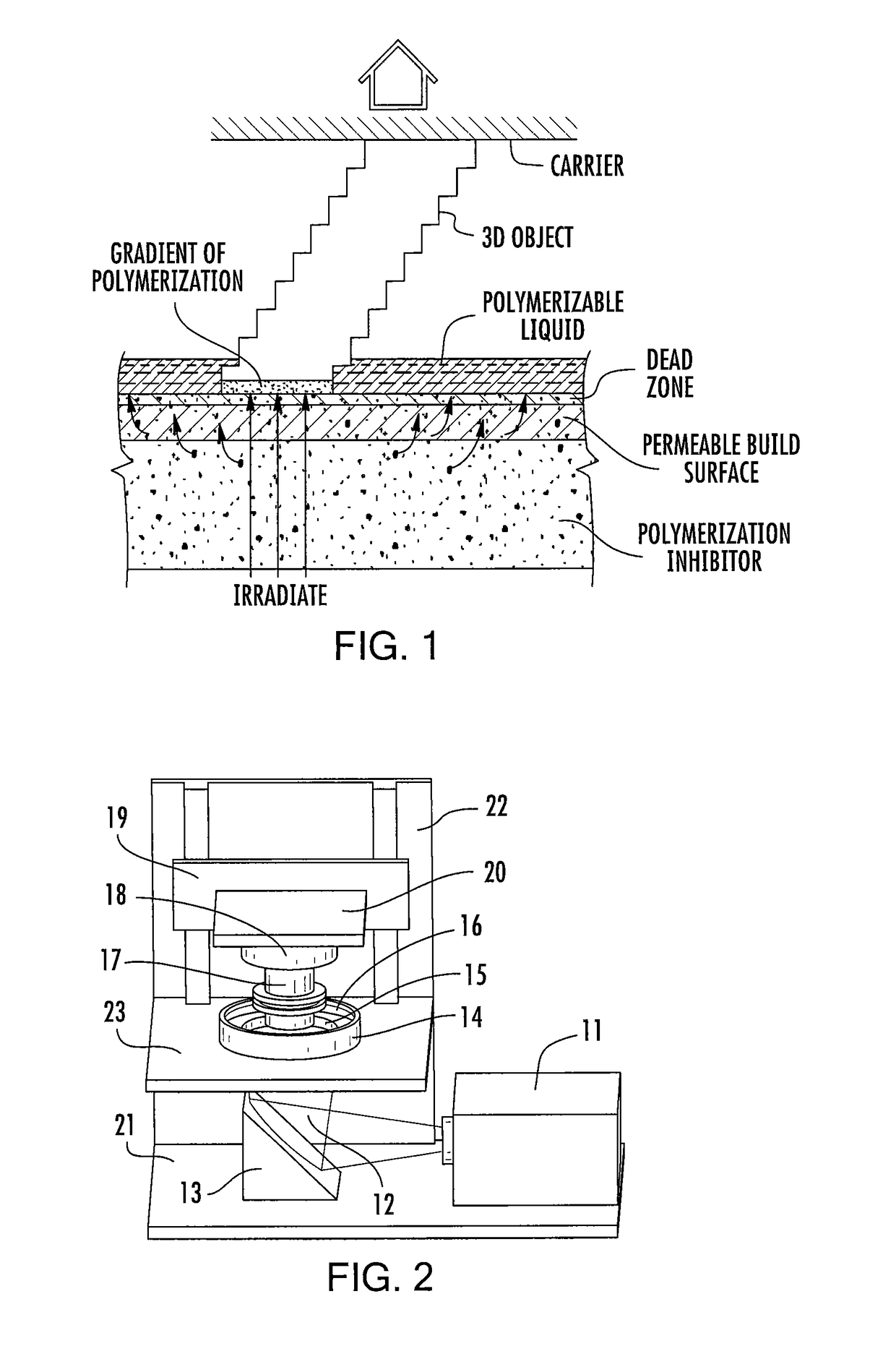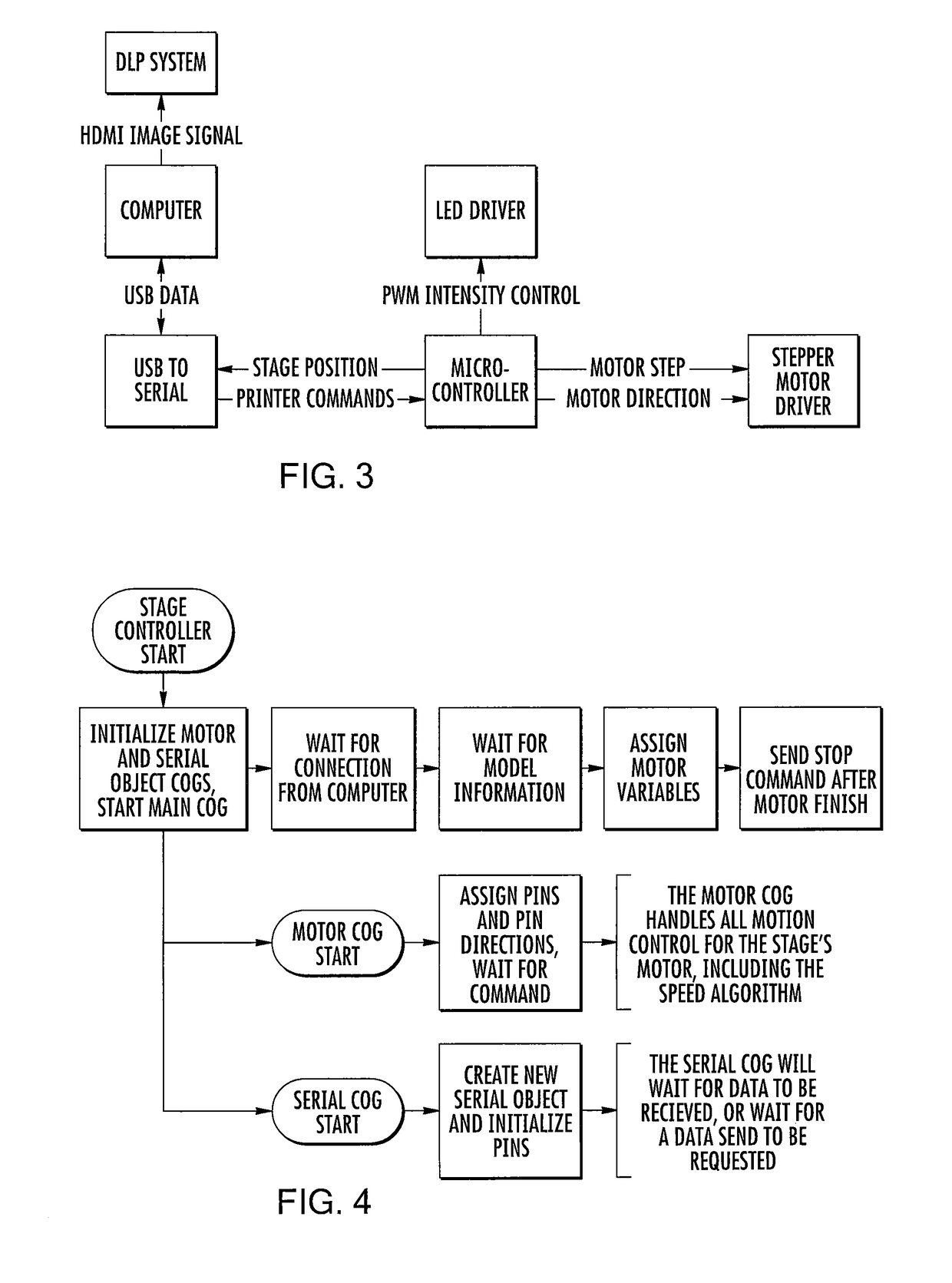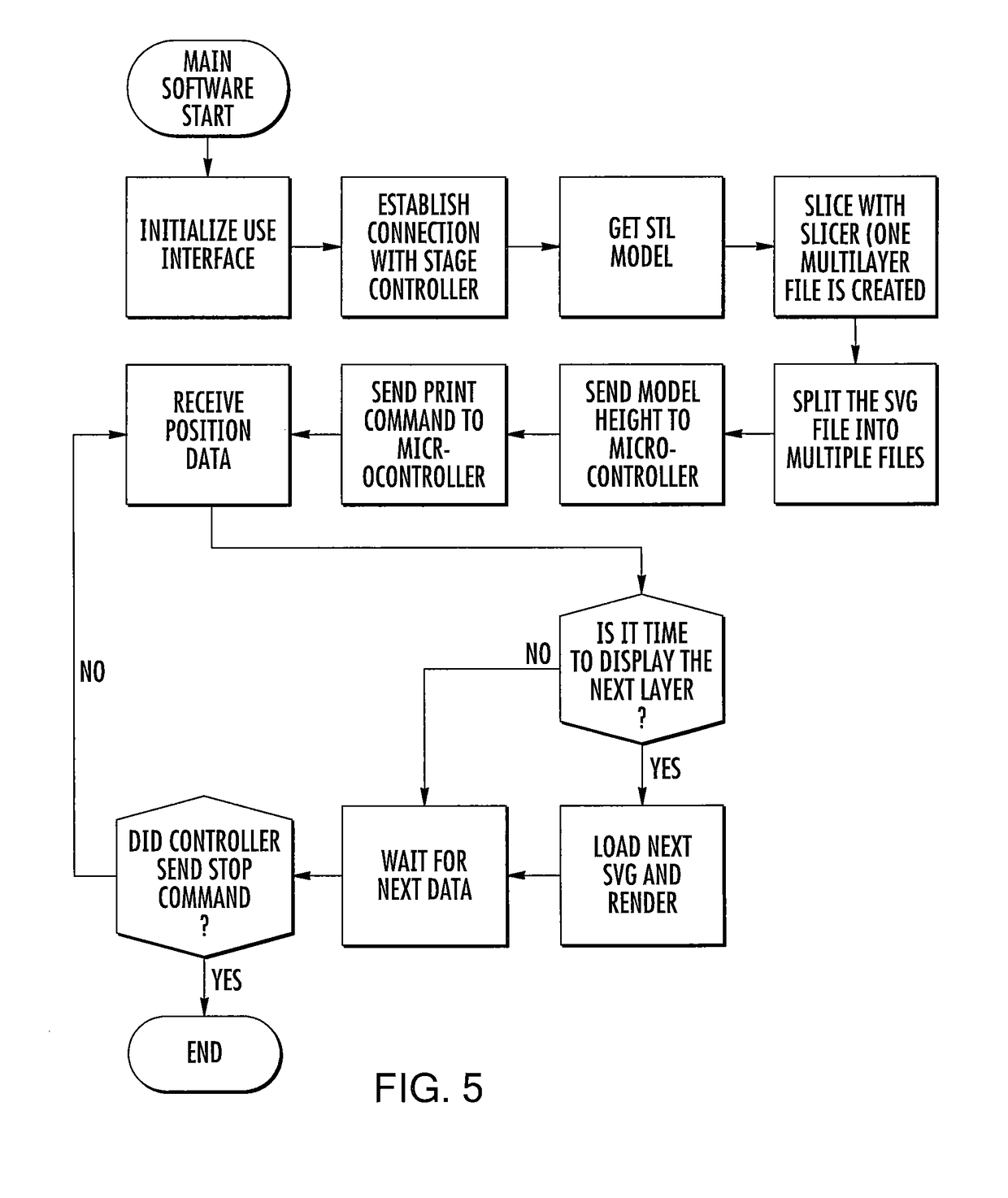Method of additive manufacturing by fabrication through multiple zones
a technology of additive manufacturing and multiple zones, applied in additive manufacturing processes, additive manufacturing with liquids, manufacturing tools, etc., can solve the problems of needing to submerge, use of additional mechanical elements, extreme care, etc., and achieve the effect of accelerating or enhancing the refilling of said build region
- Summary
- Abstract
- Description
- Claims
- Application Information
AI Technical Summary
Benefits of technology
Problems solved by technology
Method used
Image
Examples
example 1
Continuous Fabrication with Intermittent Irradiation and Advancing
[0203]A process of the present invention is illustrated in FIG. 6, where the vertical axis illustrates the movement of the carrier away from the build surface. In this embodiment, the vertical movement or advancing step (which can be achieved by driving either the carrier or the build surface, preferably the carrier), is continuous and unidirectional, and the irradiating step is carried out continuously. Polymerization of the article being fabricated occurs from a gradient of polymerization, and hence creation of “layer by layer” fault lines within the article is minimized.
[0204]An alternate embodiment of the present invention is illustrated in FIG. 7. In this embodiment, the advancing step is carried out in a step-by-step manner, with pauses introduced between active advancing of the carrier and build surface away from one another. In addition, the irradiating step is carried out intermittently, in this case during t...
example 2
Continuous Fabrication with Reciprocation During
[0205]Advancing to Enhance Filling of Build Region with Polymerizable Liquid A still further embodiment of the present invention is illustrated in FIG. 8. As in Example 1, FIG. 7, above, this embodiment, the advancing step is carried out in a step-by-step manner, with pauses introduced between active advancing of the carrier and build surface away from one another. Also as in Example 1 above, the irradiating step is carried out intermittently, again during the pauses in the advancing step. In this example, however, the ability to maintain the dead zone and gradient of polymerization during the pauses in advancing and irradiating is taken advantage of by introducing a vertical reciprocation during the pauses in irradiation.
[0206]We find that vertical reciprocation (driving the carrier and build surface away from and then back towards one another), particularly during pauses in irradiation, serves to enhance the filling of the build regi...
example 3
Acceleration During Reciprocation Upstroke and Deceleration During Reciprocation Downstroke to Enhance Part Quality
[0210]We observe that there is a limiting speed of upstroke, and corresponding downstroke, which if exceeded causes a deterioration of quality of the part or object being fabricated (possibly due to degradation of soft regions within the gradient of polymerization caused by lateral shear forces a resin flow). To reduce these shear forces and / or enhance the quality of the part being fabricated, we introduce variable rates within the upstroke and downstroke, with gradual acceleration occurring during the upstroke and gradual deceleration occurring during the downstroke, as schematically illustrated in FIG. 9.
PUM
| Property | Measurement | Unit |
|---|---|---|
| thickness | aaaaa | aaaaa |
| time | aaaaa | aaaaa |
| time | aaaaa | aaaaa |
Abstract
Description
Claims
Application Information
 Login to View More
Login to View More - R&D
- Intellectual Property
- Life Sciences
- Materials
- Tech Scout
- Unparalleled Data Quality
- Higher Quality Content
- 60% Fewer Hallucinations
Browse by: Latest US Patents, China's latest patents, Technical Efficacy Thesaurus, Application Domain, Technology Topic, Popular Technical Reports.
© 2025 PatSnap. All rights reserved.Legal|Privacy policy|Modern Slavery Act Transparency Statement|Sitemap|About US| Contact US: help@patsnap.com



